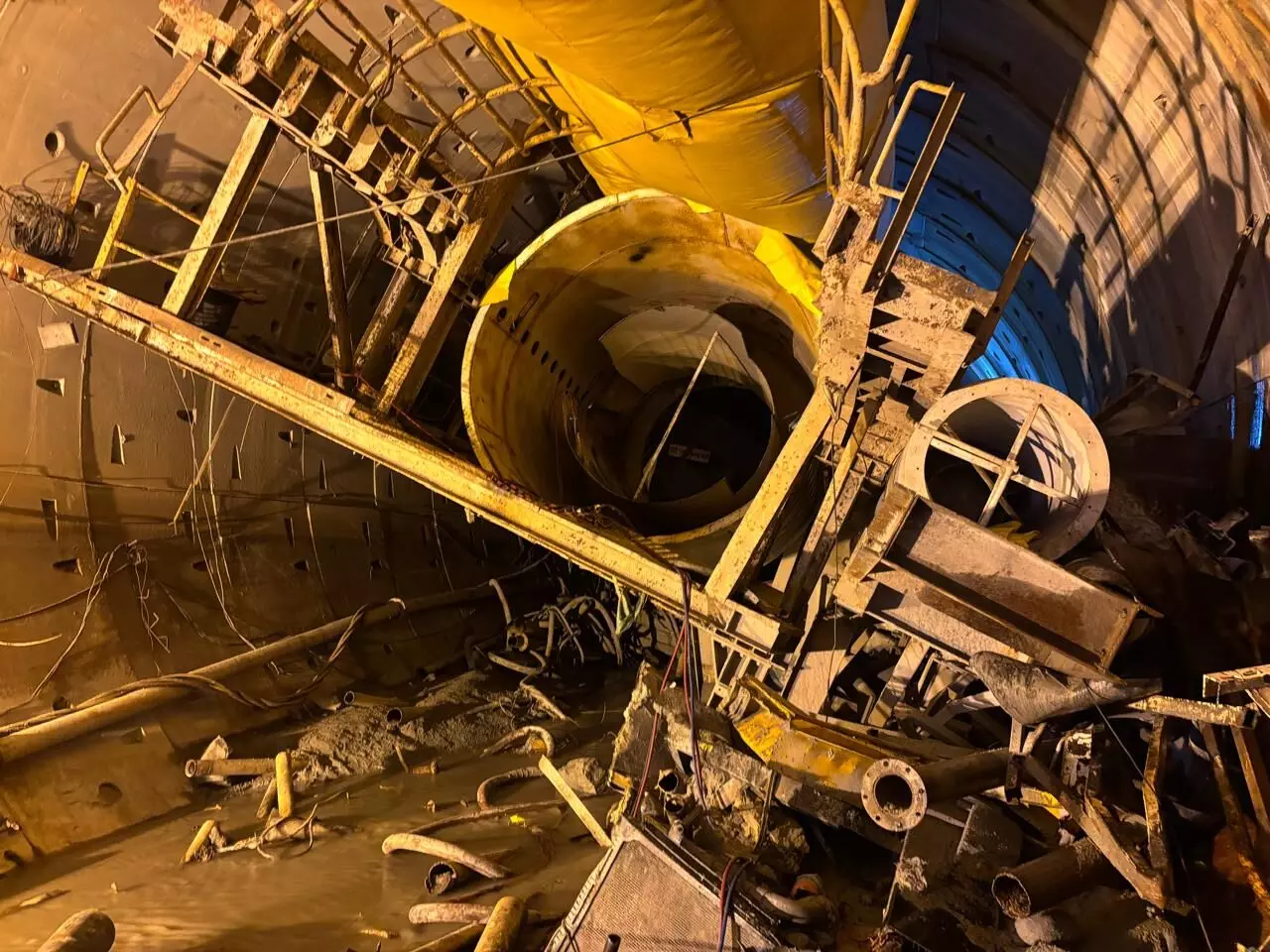SLBC Tunnel project awaits expert report, clearances after accident: Uttam Kumar
The work will be carried out quickly after the required clearances to ensure water security and agricultural stability across the state
By Newsmeter Network
SLBC Tunnel project awaits expert report, clearances after accident: Uttam Kumar
Hyderabad: Srisailam Left Bank Canal (SLBC) Tunnel works are high on the priority list for the Congress government.
The work will be carried out quickly after the required clearances to ensure water security and agricultural stability across the state, said Minister for Irrigation Capt N Uttam Kumar Reddy.
Progress of work at Srisailam Left Bank Canal (SLBC) Tunnel
As per the latest data, an incomplete 9-kilometre stretch is currently preventing the State from drawing water from the Srisailam reservoir via gravity, forcing an annual expenditure of approximately Rs 750 crore on electricity for water lifting.
The minister stated that completing this tunnel is crucial for serving backward, tribal and fluoride-affected areas.
Here are key actions and directives:
Review and clearance: A meeting with the Chief Minister and Deputy Chief Minister will be held shortly to secure necessary clearances and support from departments such as Finance and Energy.
Expert committee recommendations: The project will proceed based on the recommendations of an expert committee formed after a previous tunnel accident.
Advanced technology and surveys
- Aerial Electromagnetic Survey: The National Geophysical Research Institute (NGRI) will conduct a helicopter-mounted aerial survey to map up to one km below ground level. This is necessary due to the difficult terrain and will help identify fault lines and structural challenges.
- Aerial LIDAR Survey: The Geological Survey of India (GSI) will conduct a separate aerial LIDAR survey to ensure precise planning for the remaining 10 km of tunnelling.
Execution: The project will be executed immediately, with a focus on speed and quality, and will remain within the estimated cost approved by the State Cabinet.
Background of SLBC tunnel accident
On February 22, a section of the under-construction SLBC tunnel collapsed in the Nagarkurnool district of Telangana, trapping eight workers.
The accident occurred approximately 13-14 km inside the tunnel, an area that a 2020 report had previously identified as a ‘fault zone’ with weak rock integrity.
Rescue operations faced significant challenges due to the unstable geological conditions, with a sudden surge of water and slush complicating efforts.
The collapse caused a section of the tunnel’s roof to cave in, with officials noting the extent of the collapse may have increased over time. Only two bodies were found, while the remaining were pronounced dead.
Review on Singur Dam
An expert team has been dispatched to the Singur Dam to assess its safety and recommend urgent preventive measures.
The minister ordered the immediate placement of sandbags and other reinforcements where necessary. He also instructed officials to closely monitor all dams, reservoirs and barrages during the active monsoon season, stressing that there should be no negligence or technical delays in implementing safety protocols.
Sammakka Sagar Project (Tupakulagudem Barrage)
The State government has received a detailed study from IIT-Kharagpur regarding the backwater effects of the Sammakka Sagar Project on Chhattisgarh.
The study indicates that the project will increase the submergence area by approximately 0.4 square km (40 hectares) in specific villages of Bijapur district, Chhattisgarh, during a 500-year return period flood.
Next steps
- The government will follow up with the Chhattisgarh government to secure the necessary No-Objection Certificates (NOCs).
- Once clearances are obtained, the government will fast-track the completion of the project, which aims to stabilise 16.40 lakh acres of irrigated land and regulate 6.94 TMC of water.
Departmental promotions
Minister Reddy noted that promotions and transfers within the Irrigation Department have been carried out in a transparent and merit-based manner after 33 years.
Promotions were given to 47 Executive Engineers to Superintending Engineers, 127 Assistant Executive Engineers to Deputy Executive Engineers, and 13 Superintending Engineers to Chief Engineers. He urged all department staff to remain focused on their duties and cooperate fully to complete all pending irrigation projects on a priority basis.